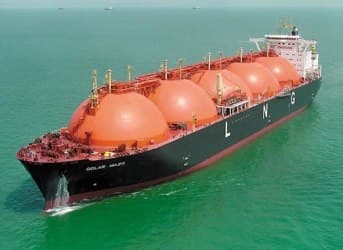No less an authority than the U.S. Energy Information Administration is bullish on the future of natural gas, writing, “natural gas is the world's fastest-growing fossil fuel, with consumption increasing at an average rate of 1.6 percent per year from 2008 to 2035. Growth in consumption occurs in every International Economic Organization region and is most concentrated in non- Organization for Economic Cooperation and Development countries, where demand increases nearly three times as fast as in OECD countries. Increases in production in the non-OECD regions more than meet their projected consumption growth, and as a result non-OECD exports to OECD countries grow through 2035. Non-OECD producers account for more than 81 percent of the total growth in world natural gas production from 2008 to 2035.”
Interestingly for the growth projections, non-OECD nations also house 82 percent of the world’s population, with non-OECD countries divided into five separate regional subgroups: non-OECD Europe and Eurasia (which includes Russia); non-OECD Asia (which includes China and India); Middle East; Africa and Central and South America (which includes Brazil). What all the non-OECD nations have in common is that demand is driven by strong long-term economic growth. Overall, the EIA sees a 52 percent increase in natural gas use between 2008 and 2035, with the majority of increase coming from outside OECD nations.
Rising global demand is going to make some countries with massive natural gas reserves, like Qatar, even richer than they currently are.
Related Article: Natural Gas, the Perfect Bridge to Renewable Energy - Part 2
But there are only two ways to move natural gas – pipelines and liquefied natural gas tankers. Rising global demand for natural gas has created a bull market for the builders of LNG tankers, none more so than South Korea’s Hyundai Heavy Industries.
LNG tankers are highly specialized vessels due to the nature of their pressurized, refrigerated cargo, and as a result are more than three times more expensive than conventional tankers carrying crude oil.
Hyundai Heavy Industries shareholders will have a happy 2013, as its order books have just been pumped up with $1.05 billion in orders for five LNG tankers, to be constructed at its Ulsan and affiliated Hyundai Samho Heavy Industries shipyards.
Hyundai Heavy Industries crown jewel for constructing the LNG tankers is its Ulsan shipyard, the largest in the world. Ulsan, opened in 1974, covers two and a half miles of Mipo Bay in Ulsan and covers 1,780 acres. During 1972-2011, Hyundai Heavy Industries has delivered more than 1,686 vessels built in Ulsan to 268 ship-owners in 48 countries, and Hyundai now commands around 16 percent of the world’s ship manufacturing market. Last year Hyundai Heavy Industries Uslan shipyard delivered 82 vessels totaling 10.1 million DWT.
Related Article: EXCLUSIVE: Beijing Sinking Teeth into Western Turf in Asia
Such expertise impressed overseas customers, as Hyundai Heavy Industries won a bid from Brunei’s state Brunei Gas energy company to build a $210 million, 155,000 cubic meter LNG tanker. Hyundai Samho Heavy Industries also won a $840 million contract for four 174,000 cubic meter LNG tankers from Greece's Maran Gas, with an option to construct two more.
Quite aside from their state of the art shipyards, Hyundai Heavy Industries is also notable for its technological innovations. The five new LNG tankers will incorporate a dual fuel diesel engine system (DFDE) which will permit the tankers to burn either diesel or natural gas, and Hyundai Heavy Industries has developed an innovative independent liquefied natural gas storage tank model, the Lobe-Bundle Tank, which has already received won Approval in Principle from the Japanese classification society Nippon Kaiji Kyokai, with International Maritime Organization certification expected shortly, as the Lobe-Bundle Tank currently meets IMO standards requiring high level of structural analysis and fatigue/fracture analysis for Type B independent LNG storage tanks.
Given rising global interest in LNG, Hyundai Heavy Industries initial investment in shipyards made four decades ago seems prescient indeed, and the company can doubtless expect many more orders to come, as global demand for the “blue fuel” continues to surge.
By. John C.K. Daly of Oilprice.com


















